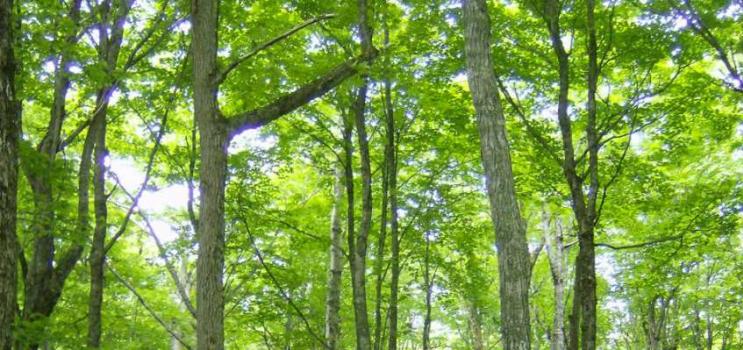Climate Change and Island Forests

Planning for the Future: Climate Change and Island Forests
One of the major challenges for forest managers and forest owners is the length of time it take many tree species to grow to maturity. Species such as balsam fir and trembling aspen have a life span that approximates that of most people - 50 to 75 years. Yellow birch and red spruce can reach ages of 150 years or more, and truly long-lived species such as eastern hemlock and sugar maple can live for 400 years or more. This means that effects of changes in the forest environment may only be understood years, decades, or even centuries into the future.
The choices people make today will also have similar long term effects. While the Acadian Forest environment has been more or less stable for centuries, climate change could bring sudden and significant impacts to the trees, plants, and animals found in our forest and to the people and communities who depend upon the many resources and benefits our forests provide.
In order to plan for the future and develop possible strategies and actions to address some of these problems, the Department of Environment, Water and Climate Change conducts a variety of forest-related studies including examining the potential impacts of climate change. The full technical study Modelled Potential Tree Distribution on PEI climate change study was designed to assess implications for the future of Island forests.
Conducted by Dr. Charles Bourque of UNB’s Forestry and Environmental Management faculty, the study used forest inventory data from the 2000 Corporate Land Use Inventory, long term climate data from Environment Canada, and the results of the 2008 LIDAR elevation and slope study to develop a computer model, which predicts how the selected Acadian Forest tree species may respond to various climate change scenarios.
The study focuses on Acadian Forest species such as white spruce, cedar, hemlock, white pine, red oak, and several maples and birches. Researchers can use this model to analyze climate change effects on other native trees as well as species from more southern regions of North America to see how they may perform under different climatic conditions. The outcomes will enable government, forest managers, wildlife biologists, forest product businesses, land owners and others who rely on healthy forests to plan for the future.